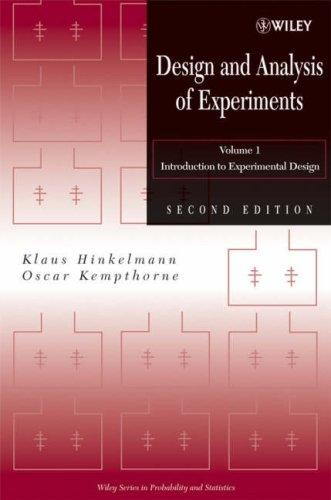9.6 In studying the effects of pollution, seedlings are usually exposed to specified pollutants for a certain
Question:
9.6 In studying the effects of pollution, seedlings are usually exposed to specified pollutants for a certain period of time (say 6 hours) during the day for several weeks after which an evaluation is made. The seedlings are put in a pollution chamber which then receives the pollutant. Consider a specific case in which an investigator wants to compare 4 pollutants: Po filtered air, P = 03, P = NO2, and P3O3 + NO2 at specified levels of concentration. He has only limited resources. In particular, he has only 8 pollution chambers in each of which he can put 3 seedlings. He feels that this is not adequate. So he decides to use the same chambers for 6 hours during the day and for 6 hours during the night, that is, 48 seedlings are used for the experiment. He is sure that there will be systematic differences between the day and night results.
(i) Describe an experimental plan for this experiment. What is the name for the experimental design that he is using? (ii) The investigator wonders whether certain comparisons among the pollu- tants will depend on whether one uses the results from day or night expo- sure. What kind of "effect" is he talking about and how can he investigate that? (iii) Give an appropriate linear model for analyzing data from this experiment. (iv) Outline the ANOVA table (source of variation, d.f., E(MS)) and indicate what hypotheses can be tested and how. In particular, what useful hypothe- ses about the treatment effects can be tested given the particular pollutants used in this experiment?
Step by Step Answer:







